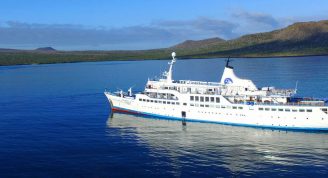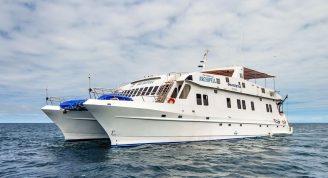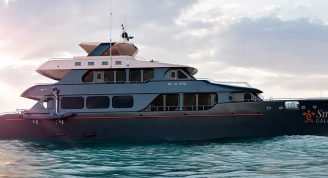Description
The “Active Galapagos on the 14 Passenger Samba” cruise is a dynamic and adventurous 8-day journey ideal for inquisitive, physically fit explorers. This unique experience is guided by top-tier Galapagos National Park Certified Naturalist Guides, ensuring deep immersion and engagement with the Galapagos’ unique ecosystem.
Trip Name
Pristine and Born of Fire Galapagos Active Cruise
Days
11
Overview
Vessel Type: Superior class small ship
Length: 24 meters
Passenger Capacity: 14
We're very glad to feature the Samba as our charter ship for our 8 day “Active Galapagos” departures (we often recommend it to independent travelers as well). We’ve been working with the Samba for more than 20 years. The ship is owned and operated by the Salcedo family of Galapagos. The Salcedo family has been in the Galapagos tourism business for over 45 years.
The Samba is a tourist superior class ships - but its crew, naturalist guides and overall management deserve a “luxury” classification. It regularly receives rave reviews on social media.
The 78 foot (24 metre) Samba accommodates 14 guests (2 less than the usual 16 passenger standard) in 7 cabins. With the exception of cabin # 7, which has a pullman berth (double pushed against a wall), all of the Samba's cabins have an extra-wide lower bunk, which can accommodate a cozy couple, plus a single upper berth (in case the couple needs a bit of space).
The steel-hulled yacht is air conditioned and all cabins have private bathrooms. There's a cozy indoor salon and one outdoor dining area astern. All the woodwork is hand made in Galapagos from the honey coloured tropical "cigar box" cedar. The Samba is a graceful, non-obtrusive vessel - it doesn't impose itself on the Galapagos landscape you are out there to experience.









